Michigan DNR said it killed wolves to protect humans. Then we got its emails.

- April 8, 2021: Lawsuit: Michigan wolf advisory group stacked with hunting advocates
- Nov. 3, 2020: Gray wolves, now off endangered list, may be targeted by Michigan farmers
- Update: Dana Nessel to review Michigan DNR handling of wolf kill records
ONTONAGON — Bouncing along a sodden farm pasture, Brad Johnson stopped his state vehicle when he came upon the newborn calf, or what remained of it.
The veteran wildlife handler had been to this patch of farmland in the western Upper Peninsula several times the previous fall, when a dozen calves from the Dykstra beef ranch were reported missing.
Gray wolves were suspected in those disappearances. But Johnson had little reason to fear for his own safety on this wet spring day; the local wolf pack was not considered a threat to people.
Related:
- Five Michigan DNR workers contracted tuberculosis, likely from testing deer
- Opinion | Michigan's management of wolf population is outdated
Which is what made what happened next startling: A single wolf burst into view and Johnson could only watch, frozen, as another calf was attacked, shredded before his eyes.
The brazen strike in the spring of 2016 ‒- which led to three wolves being hunted down and shot ‒- was not the first uncomfortable encounter between people and wolves in Michigan's Upper Peninsula.
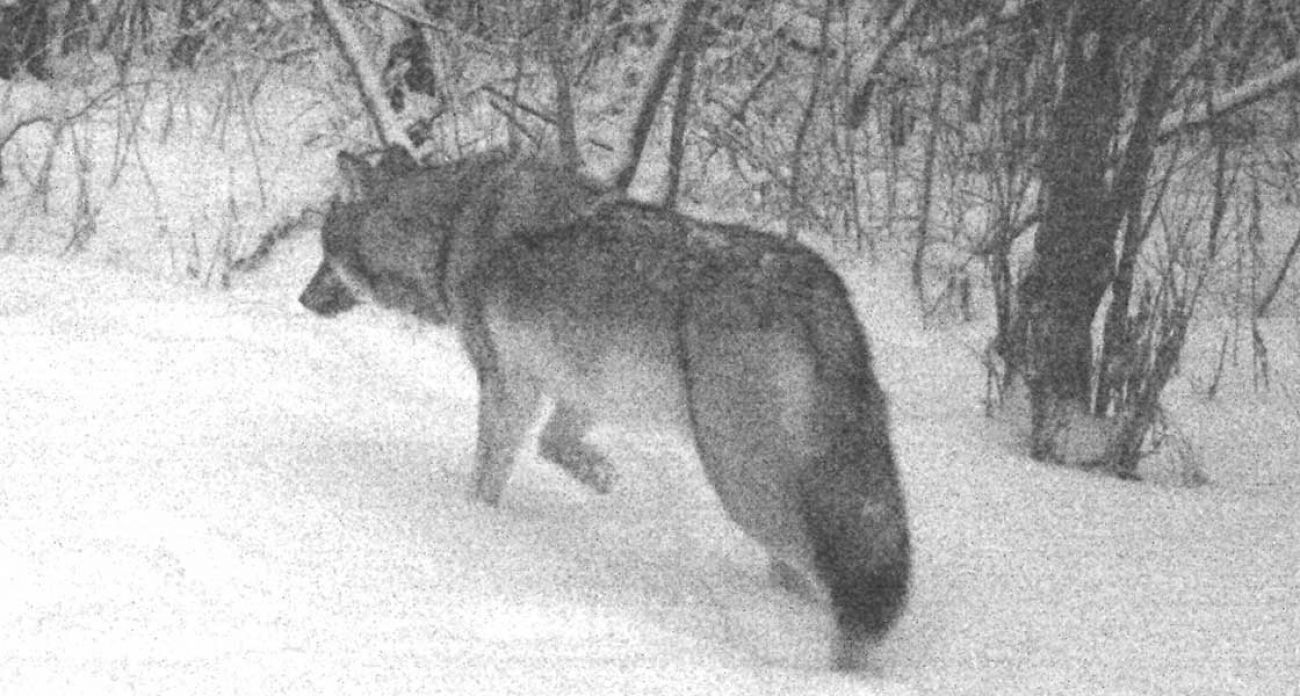
A few years earlier and 60 miles away in Ironwood, wolves were spotted outside a home, forcing residents to pound on a sliding-glass door to chase them away. More ominously, gray wolves were seen circling the perimeter of a children’s day care during recess. Those wolves, too, had to be shot dead.
Taken together, the incidents were powerful evidence that a resurgent wolf population in the U.P. had become habituated and aggressive toward humans, strengthening calls among farmers, hunters and some lawmakers to drop gray wolves from the list of endangered animals protected by federal law.
There was just one problem: None of these harrowing accounts turned out to be true.
Related: The debate is on: Will wolves move to Michigan’s Lower Peninsula?
Related: Wolves face genetic challenge in Michigan’s Isle Royale, study says
No wolf sped past Brad Johnson to attack a calf on the Dykstra farm. No wolves were seen prowling near preschoolers at recess in Ironwood. And no pack congregated on the back deck of a local home.
Officials at the Michigan Department of Natural Resources and some lawmakers opposed to wolf protection policies were found to have embroidered, misstated or outright fictionalized the threat that gray wolves posed to humans.
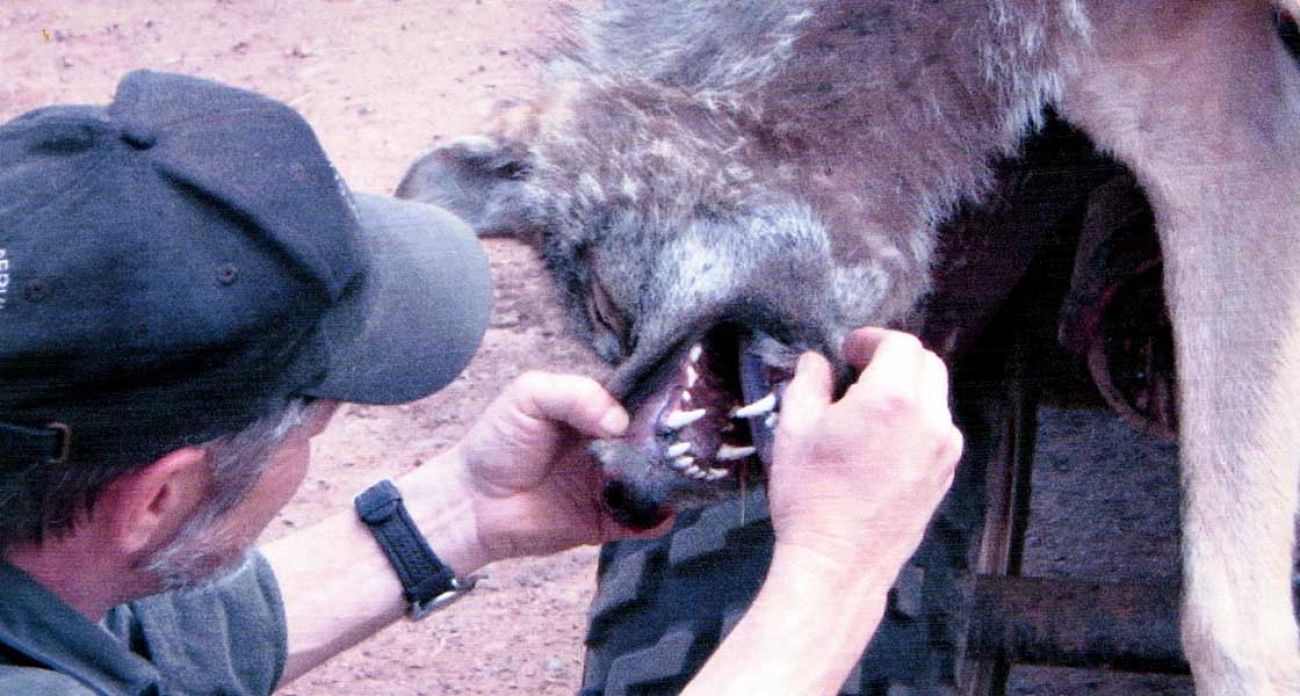
But getting to the truth took years.
As a former MLive investigations editor and now freelance reporter, I’ve followed the controversy over the wolf kills for years and broke stories raising questions about DNR’s public statements about the shootings.
Now, internal emails I obtained for Bridge Magazine show that top DNR leaders had blocked the release of documents that contradicted their now-discredited justification for killing the Ontonagon wolves in 2016. These documents indicate that, rather than posing a peril to humans, the wolves were shot because they were decimating herds of high-priced beef cattle at the Dykstra farm, costing the state tens of thousands of dollars in reimbursements.
The distinction is critical. The U.S. Endangered Species Act allows the killing of federally protected animals if they pose a danger to people. But it forbids their killing for attacking livestock. Violators can face up to a year in jail.
The obfuscation comes at a critical time: The Trump administration wants to remove wolves from the list of protected animals under the Endangered Species Act in the Lower 48 states, which could impede their recovery of animals once on the verge of extinction.
The records obtained by Bridge raise questions about the credibility of state wildlife leaders as honest brokers in the debate over whether to delist gray wolves from federal protection.
They also highlight fresh concerns about the rigor of Michigan’s public records law, which allows state or local governments to routinely delay or stonewall public requests for documents for months or even years, often with little consequence.
“How can we trust the DNR will manage wolves based on the best-available science with their history of misleading the public, reporters and the U.S. Fish and Wildlife Service?” asked Nancy Warren, executive director of the National Wolfwatcher Coalition, a volunteer organization that has been critical of the state’s transparency on wolf encounters.
The DNR has since acknowledged inaccuracies in its petition to the U.S. government to shoot the wolves. But a department spokesman blames the discrepancies on a “miscommunication” among staffers and denies the agency purposely sought to mislead the public or the federal government.
‘Shoot, shovel and shut up!’
The Dykstra farm has become a symbol of wolf depredation in Michigan.
The 700-head operation, on 2,000 acres near Lake Superior in the Upper Peninsula, has more cattle than the nearby town of Greenland has people.
Dykstra trademarks its herd as “Michigan Craft Beef,” raised without antibiotics, hormones or genetically modified feed. Its Black Angus are pampered right up to the moment they are slaughtered ‒ grazing on grass and alfalfa, with tart-cherry syrup, apples and wet beer barley added to give their meat a distinctive taste.

Ontonagon is geographically closer to Fargo, North Dakota, than to Detroit, making this big snow country, averaging about 200 inches a winter. Snowmobiling is popular here. Wolves are not.
“Shoot, shovel and shut up” is a common phrase among the locals, reflecting ranchers’ long-standing frustration with federal wildlife protection policy. It’s a policy, they say, that seems more focused on protecting predators than shielding farmers from economic ruin.
One popular bumper sticker has mock bullet holes and the message: “Michigan Wolves: Smoke a Pack a Day.”
The pack that ravaged Dykstra’s calves follows the Flintsteel River, which runs past the company’s large cattle operation. At the time, the Ontonagon Pack included six adult gray wolves -‒ two males and four females.
There is little question that the wolves struck the Dykstra cattle hard in 2016.
Records show 35 cattle were killed or reported missing that year, a blow even for one of the largest cattle operations in the Upper Peninsula. Spring was particularly difficult. In April and May alone, the farm lost 16 calves. Workers took pains to protect the animals -‒ installing flashing lights around the pasture, moving the herd closer to the farm, performing head counts twice a day -‒ and still the wolves feasted.
But even as the farm was victimized by wolves, it benefited from government help. Not from the federal government, but from Michigan taxpayers and a prominent Upper Peninsula lawmaker.
To date, the ranch has received roughly $50,000 from state taxpayers under an agriculture program meant to keep the peace with farmers. The fund reimburses farmers at “fair market value” for livestock killed or missing because of wolves, coyotes and, if ever necessary, cougars.
That $50,000 is more than any farm has received since the state program began in 2012, according to a Bridge analysis of more than 400 payments totaling a quarter-million dollars.
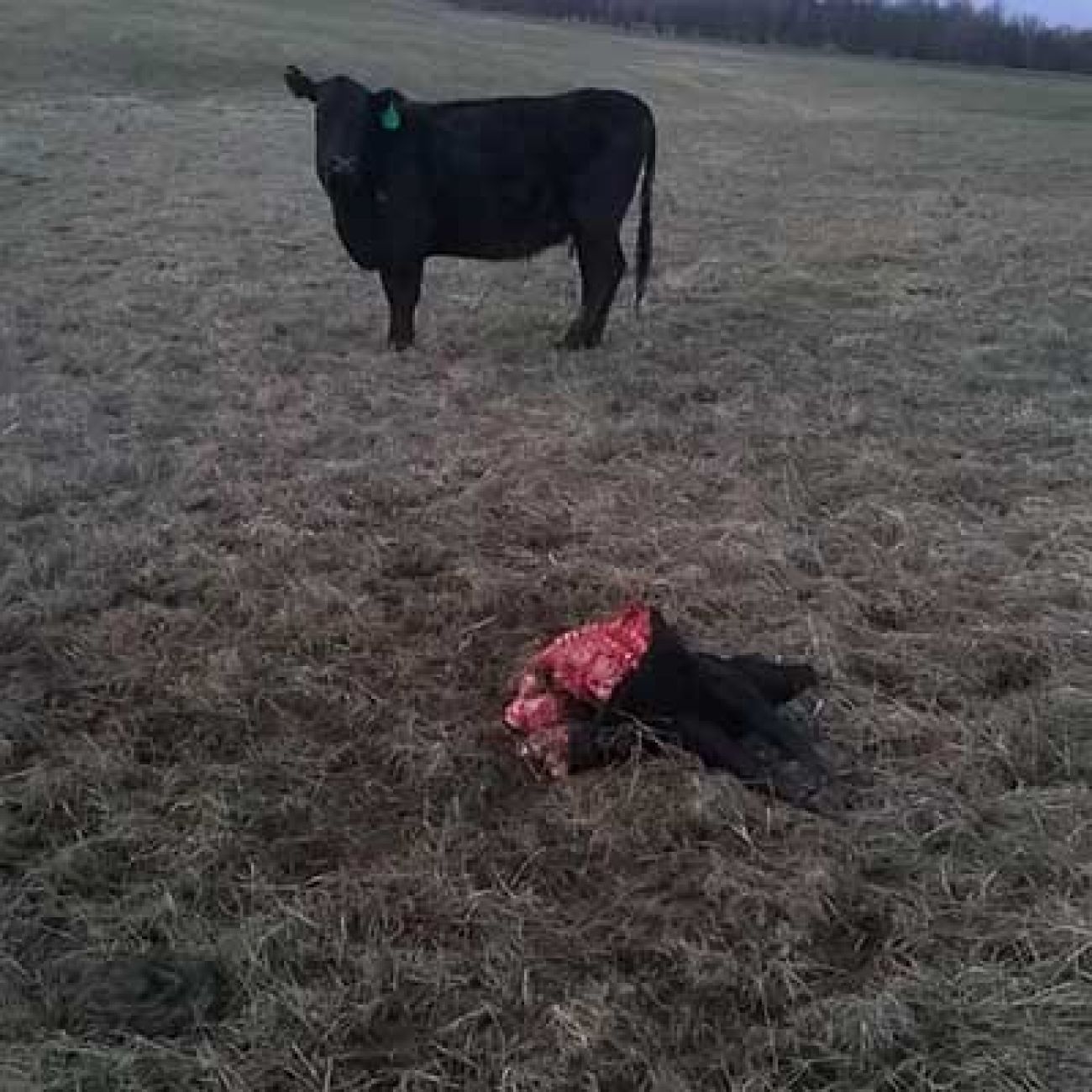
Most payments were for Dyktra’s losses in 2016 — $28,915 for 20 cattle killed and 15 missing (and presumed killed), more than all other Michigan farms combined that year.
Tom Dykstra, of Moraine Park Farms near Zeeland, which owns the Ontonagon farm, declined to comment for this article. In previous interviews, Dykstra, 40, has said he does not oppose federal efforts to protect wolves — when they are on public land. But ranchers also need protection, he argued, and he has not hesitated to press for state compensation when predators strike.
Indeed, in early 2016 Dykstra was able to persuade the state to triple the value of his herd based on its craft-level quality, Michigan Department of Agriculture and Rural Development (MDARD) records show.
Seven weeks after agreeing to raise compensation for Dykstra’s cattle, the state secured federal permission to kill the wolves, citing the now discredited incident involving a wolf attacking near Brad Johnson.
State DNR and agriculture officials say the high price of reimbursing Dykstra for lost cattle played no role in the state’s efforts to have the Ontonagon wolves killed.
But an internal DNR email obtained by Bridge shows Dykstra was haggling with the state agency over reimbursement money around that time.
The email, written May 19, 2016, indicates Tom Dykstra was angry MDARD was pressing him to waive a $5,000 penalty the state owed him for slow reimbursement.
“(T)he MDARD employee pushed Dykstra into not making an issue of the ($5,000) because the employee would get into trouble,” U.P. wildlife supervisor Terry Minzey wrote to his boss, Wildlife Chief Russ Mason.
“It sounds like the conversation went downhill from there,” Minzey concluded.
The state sought ‒ and received ‒ federal approval the next day to have the Ontonagon wolves killed.
Shootings and talking points
DNR supervisors and wildlife managers would not publicly acknowledge the killing of the three wolves for two years, as detailed in nearly 500 pages of emails Bridge received this year through the state Freedom of Information Act. Even when the agency finally confirmed the killings last November, it stuck by the argument that the wolves posed a danger to humans.
The agency’s internal records tell another story.
In the months before the May 2016 wolf shootings, DNR records show that the agency had repeatedly described the wolves of the Ontonagon pack as posing no threat to humans.

Brad Johnson, the field technician, had investigated missing cattle at the Dykstra farm three times the previous fall, filling out checklists on wolf activity reports after every visit. In each report, he noted the wolves did not show “fearless behavior” and were not “perceived to be a threat to personal or family safety,” or even to family pets.
More critically, Johnson’s notes say nothing about a wolf racing past him to attack another calf on April 29, 2016, the narrative pushed by the DNR to help justify killing the Ontonagon pack.
Instead, the records show Johnson was in fact on the Dykstra farm earlier that day to check on a dead calf. Hours later, on a return visit, a motorist told him that cows were being chased on another part of the ranch. Johnson had to drive three-quarters of a mile before he spotted a wolf. His report said he blew his horn and fired a warning shot from 60 to 80 yards away to “chase a wolf away.”
Several weeks later, when DNR petitioned the federal government to approve the wolf killings, an agency memo reimagined the circumstances of Johnson’s April encounter with the wolf, making it sound like the wolf was comfortable enough to attack the calf while Johnson was in the field.
“These wolves continued to attack livestock, even in the presence of humans, including a DNR technician,” said a one-page DNR document, dated May 23, 2016.
The document, labeled “Wolf Talking Points,” was not publicly released. In fact, the DNR announced nothing about the calf attacks or wolf shootings at the time.
Wolves terrorizing Ironwood
The Ontonagon encounter was not the only alarming wolf tale to eventually unravel in the U.P. Tales of gray wolves menacing preschoolers and residents in Ironwood ‒ accounts amplified by state DNR officials and lawmakers ‒ would also fall apart under scrutiny.
The daycare story first gained prominence in 2011 when state House and Senate members who favored the legalization of wolf hunts cited the incident in urging Congress to delist gray wolves from federal protection.
In resolutions passed a month apart, the lawmakers wrote:
“Wolves appeared multiple times in the backyard of a day care center shortly after the children were allowed outside to play. Federal agents disposed of three wolves in that backyard because of the potential danger to the children.”
That account was inaccurate, as I first reported for Mlive.com in 2013. Lori Holm of Ironwood told me she was home with children who were inside the house when she spotted a wolf on her lawn near her dog, a white Sheltie. She went outside and screamed at the wolf, which turned away, ending the drama.
There were no children in the backyard that day. It was only one wolf, not three. And the wolves eventually shot in Ironwood were killed, not in the woman’s yard, but seven months later on property nearly a mile from Holms’ land.
The daycare story originated with Anders Tingstad, a pro-hunt Ontonagon County Circuit Court judge who helped write the resolution state lawmakers directed to Congress. An investigation found Tingstad had misconstrued an incident that he had heard about secondhand.
The Senate resolution was sponsored by Tom Casperson, R-Escanaba. He would later apologize on the Capitol floor for the misleading account.
"I was mistaken, I am accountable, and I am sorry," Casperson told colleagues in 2013. "Words matter. Accuracy matters. Especially here, with a topic that is so emotional and is so important to so many, especially those whose way of life is being changed in my district.”
Casperson was not the only state official who had pressed the narrative of prowling wolves in Ironwood.

It was a DNR employee, furbearer specialist Adam Bump, who told Michigan Radio in May 2013 of wolf packs terrorizing Ironwood residents.
“So you have wolves showing up in backyards, wolves showing up on porches, wolves staring at people through their sliding-glass doors when they’re pounding on it, exhibiting no fear,” he said during the interview.
Never happened.
At least not in Michigan, as Bump would later acknowledge in recanting the story on air. He said he had mistakenly recounted an incident from a book he had read about human encounters with mountain lions in Colorado.
Inquiries evaded for years
Warren, of the National Wolfwatcher Coalition, said she first heard “casual talk” of wolf attacks at the Dykstra farm in May 2016 as she listened to a country music station at her home in nearby Ewen.
Inquiries to the DNR’s Marquette office that May 26 were met with a string of evasive responses, her correspondence shows. Warren persisted.
She filed a formal request for cattle-attack reports the next morning, Friday, May 27, 2016.
Warren didn’t know it then, but the first of the three killings of the Ontonagon wolves had already taken place.
Under the Michigan Freedom of Information Act, government agencies are required to respond to public records requests within 5 business days, though a provision allows them a 10-day extension, which they routinely take.
At the end of that period, the agency’s only obligation is to give a response, such as by sending a letter saying the records will (or will not) be provided.
Agencies are not required to actually provide the records within that time. In fact, one significant loophole in state law is that it provides no clear guidelines for when the records themselves must be turned over, which means that people seeking records often have to rely on the goodwill of the government worker in that office.
DNR charged Warren $87.50 for the records.
Nine weeks later, the agency turned over 35 pages on cattle attacks to Warren.
But when she looked at the papers sent by Chief Mason’s office, the names, addresses and contact information were blacked out, making it impossible to determine which farmers lost cattle to wolves. DNR also excluded geographic coordinates ‒ township, range and section numbers ‒ for farms that suffered livestock attacks.
It’s not unusual for government offices to redact parts of a document. Generally, they’re allowed to block information if they can show it falls under one of several exemptions to public records, usually to protect someone’s privacy. The home address of a judge or police officer, for example, or the Social Security number of a party in a lawsuit are the kinds of information shielded from public release.
DNR sought to extend this same exemption to farms. Victoria Lischalk, Chief Mason’s executive assistant, wrote Warren that the location of livestock attacks was considered “information of a personal nature (and) would constitute a clearly unwarranted invasion of privacy” if released.
Warren found that argument preposterous. As a longtime wolf advocate who had helped the state develop its wolf management plan in 2008, she said there were plenty of times when she’d received similar information within days.
So in November 2016 Warren hired an attorney to sue DNR, arguing that the location of reported wolf attacks were germane to the public’s understanding of how the DNR handled wolf encounters, and outweighed any privacy concerns of farmers.
DNR’s stonewalling, she argued, was an effort to retaliate against her for her outspoken opposition to wolf hunting.
“In short, it appears that higher-level DNR officials have ended the friendly and informal relationship [Warren] had previously enjoyed,” the suit said, “and have instituted a policy of tight lips.”
Lawsuits take time. It was not until May 2018, two years after Warren first sought the records, that Michigan Court of Claims Judge Cynthia Diane Stephens ruled in Warren’s favor and ordered the public records released.
“General geographic information describing where a wolf encountered livestock does not fit the definition of ‘personal,’” Stephens wrote. “Even assuming the information were personal, the balancing test would favor disclosure because the information reveals information about [DNR’s] wolf-management policies.”
The judge ordered DNR to pay $11,000 in fees and costs to Warren’s lawyer, Rebecca Millican of Traverse City, to reimburse Warren for the cost of litigating the case.
A powerful friend in Lansing
The DNR documents released to Bridge add to evidence uncovered in earlier reporting I performed for The Detroit News that suggested DNR had bent to pressure from Casperson ‒ the pro-business, anti-wolf senator from Escanaba ‒- to have the Ontonagon wolf pack killed.
As cattle losses mounted on the Dykstra farm in the spring of 2016, it was Casperson, the influential chairman of the Senate’s Natural Resources Committee, who intervened at the request of owner Tom Dykstra.
The senator’s 38th District covered the western U.P., including Ontonagon County and the Dykstra operation. Casperson ‒ who once wore a wolf-skin cap to celebrate a wolf-hunt victory ‒ was a strong proponent of reshaping the state’s conservation laws to make them more friendly to business, hunting and property interests.
Until term limits forced him from office last December, Casperson led the charge to allow the hunting of gray wolves in Michigan should they ever lose federal protection. When I interviewed him last fall, Casperson acknowledged he had called Terry Minzey, DNR’s U.P. wildlife supervisor, after getting an earful from Tom Dykstra.
The rancher was angry that state and federal wildlife managers had captured and caged two of the wolves the day before, only to release them. The wildlife managers had hoped that harassing the wolves by caging them would scare them off.
Dykstra “had lost like 14 calves and was sending regular pictures and it was just unacceptable,” Casperson said of his decision to call DNR. “You can’t wipe out a guy's herd.”
Reimbursing Dykstra’s farm for livestock losses was adding up, Casperson said, even as he acknowledged the wolves had no history of being aggressive around people.
“The question became,” Casperson said, “who is going to go first? Who wants to take the first shot, so to speak? I think he (Minzey) understood someone had to go first.”
Three days later, Minzey put his name to the memo describing the phantom wolf attack in front of Johnson.
Dykstra farm manager Duane Kolpack confirmed Casperson’s assessment.
The decision to kill the wolves “was kind of thrown together quick because the [animal] activists kind of frown on killing wolves when they are federally protected,” Kolpack told me last year.
It was only after Casperson and Kolpack separately disclosed the wolf shootings that DNR acknowledged the killings, 2 ½ years after they happened. Even then, the state still insists the pack’s aggressiveness in the presence of humans (and not their killing of livestock) prompted the decision.
Federal wildlife law permits the killing of protected gray wolves in defense of human life, or if wolves pose a “demonstrable but non-immediate threat to human safety.”
In seeking federal permission to shoot the wolves, DNR highlighted Johnson’s purported encounter with the aggressive wolf at the Dykstra farm.
“In one case, the wolf was sufficiently bold as to enter the pasture and kill a calf at the very moment one of our wildlife technicians was in the same field investigating a previous kill,” Minzey, the wildlife supervisor, wrote to the federal government ‒ bolding and underlining the passage.
Curiously, in the version of this letter the department provided to me in 2018, DNR removed the bold and underlined emphasis used by Minzey in petitioning the feds.
Likewise, the department also withheld a portion of the U.S. response which indicated just how influential Minzey’s account was in the federal government’s approval of the wolf kills. That excised paragraph said:
“It is clear that the wolves are acting aggressively including in the presence of humans as documented by the attack on livestock while the MDNR technician was in the same field, ” wrote Scott Hicks, regional U.S. Fish and Wildlife Service supervisor, in approving lethal action.
The emails released to Bridge show DNR pressed the same, discredited account involving Johnson to its own employees. On May 23, 2016, Mason told DNR staff:
“This past week, for the first time ever, the U.S. Fish and Wildlife Service authorized the lethal removal of three wolves that showed persistently, brazen behavior by killing livestock in the presence of the operator and our staff.”
Johnson declined comment for this article. Minzey, the supervisor who wrote the inaccurate report, did not return multiple emails and phone messages and DNR would not make him available for an interview. He remains with the department.
DNR spokesman Ed Golder describes Minzey’s account as a “communication breakdown.” In an email earlier this year, Golder said Minzey had “no clear recollection” how he got the facts wrong about the 2016 wolf encounter.
But Golder also insists the decision to kill the Ontonagon wolves was not solely based on the Brad Johnson incident.
“That single incident was one factor among others involved in drawing the conclusion that the wolves posed a non-immediate threat to human safety,” Golder wrote Bridge.
He also noted that non-lethal measures had failed to keep the wolf pack from Dykstra’s cattle pastures.
Golder declined to elaborate, writing in March: “We don’t have anything to add to that account.”
But Russ Mason did.
Sticking to its defense
Mason was DNR wildlife chief for over a decade and was well known to hunters, with his sprawling command ranging from furry and feathered game to neurological illnesses like chronic wasting disease in “zombie” whitetails.
Last Nov. 30, Mason told me the Ontonagon wolf shootings were necessary to protect people.
The DNR, Mason said, is “just as transparent as we can be with the number of wolves that have been [killed].” He released a three-page “timeline” purporting to set the record straight.
But Golder, the agency spokesman, acknowledged in an email a few months later that Mason knew the Brad Johnson wolf attack story was false “prior to the time of your interview.” Brian Roell, a DNR wildlife specialist, had told top officials what really happened two days before the interview. This was apparently the second time Roell had raised questions internally about the agency’s description of the incident, email records obtained by Bridge show.
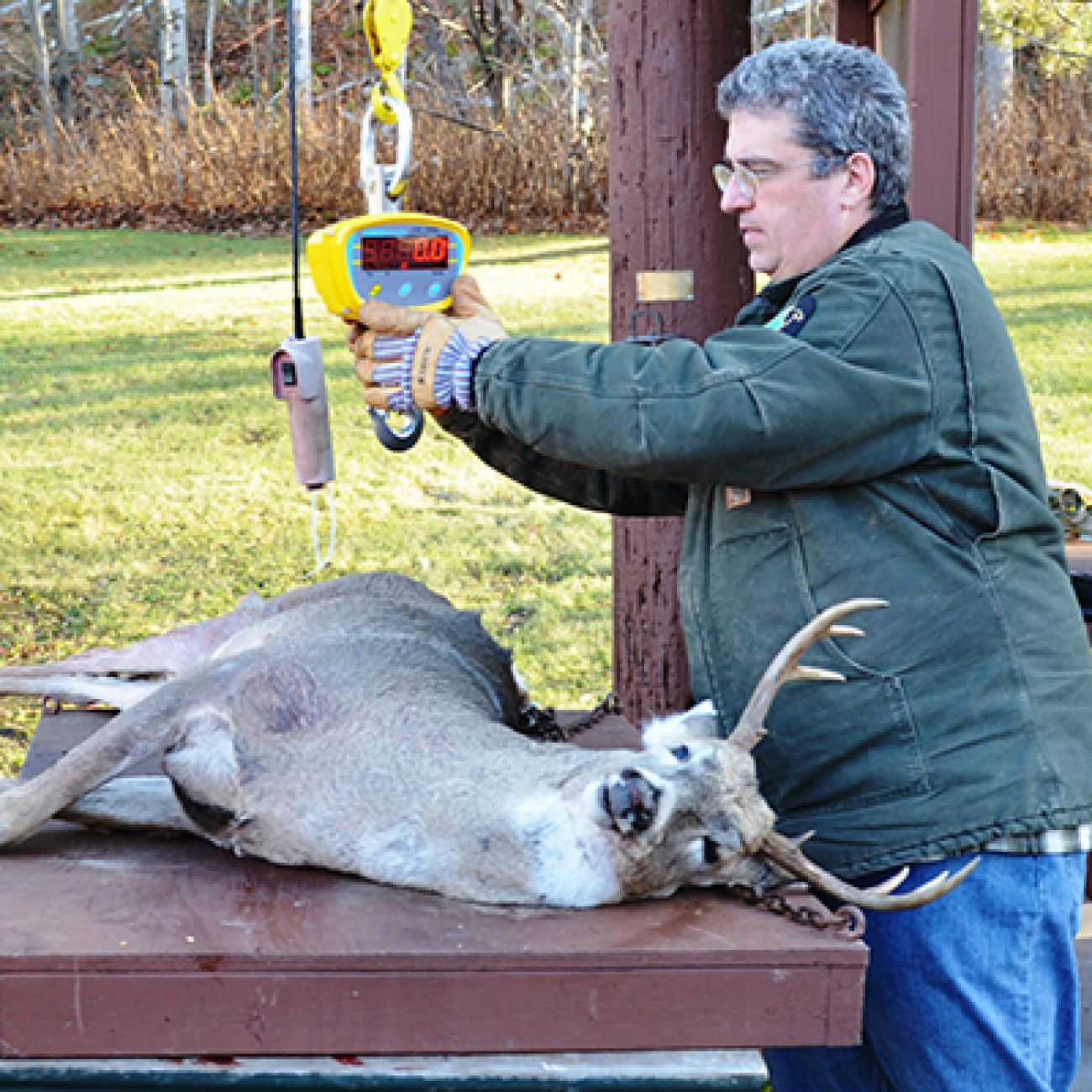
Nonetheless, DNR Director Keith Creagh insisted in an interview last year that he was also “familiar with there being menacing behavior” by wolves at the Dykstra farm leading to shootings, adding: “I would be surprised that a DNR employee would fabricate an incident.”
This September, DNR announced Mason was leaving his post as wildlife division chief to become the agency’s first executive in residence at Michigan State University’s College of Agriculture and Natural Resources.
Creagh was replaced by Dan Eichinger after Gov. Gretchen Whitmer won office last year.
Outcry from conservation groups
The agency’s shifting accounts have drawn scorn from conservation groups, which say they’re worried the Trump administration will soon remove federal protection for gray wolves.
“Federal (wolf) delisting cannot legally proceed without an adequate and reliable state regulator to take over – and the DNR has once again shown it is not up to the task,” Molly Tamulevich, Michigan director of the Humane Society of the United States, told Bridge.
Collette Adkins, a senior attorney at the Center for Biological Diversity, which advocates for endangered species, calls DNR's account of the Dykstra farm incident "nonsensical" and "inexcusable,” adding that “leadership at the Michigan DNR needs to fire any employee who lied about the behavior of wolves on that farm.”
"Decisions about the fate of endangered wildlife need to be based on science, not fabricated stories aimed at appeasing politicians,” she said.
The Arizona-based center is suing the U.S. Fish and Wildlife Service over plans it announced in March to delist wolves in the mainland U.S. states. The proposal closed for public comment on July 15. It remains unclear when a final decision will be made.
Scott Hicks, the regional Fish and Wildlife supervisor who approved the shooting of the Ontonagon wolves, said he still believes the shootings were appropriate, even though the described attack near Brad Johnson turned out to be false.
“It sounds like you are talking with people who perhaps have a different opinion, but, here is the bottom line: I am satisfied with the information the Michigan DNR provided me about this issue and I am confident the decision to take the wolves was fully in accordance with the ESA,” Hicks wrote in May, referencing the U.S. Endangered Species Act.
“If you continue to have questions about what the DNR did or said, I suggest you contact them.”
The future of Michigan wolves
Removing gray wolves from federal protections would mostly impact Michigan, Wisconsin and Minnesota. More wolves roam the western Great Lakes, about 4,200, than in the Pacific Northwest and Northern Rockies combined.
Deciding how to manage this vestige of wild America is especially relevant as wolf populations level between 600 and 700 in Michigan.
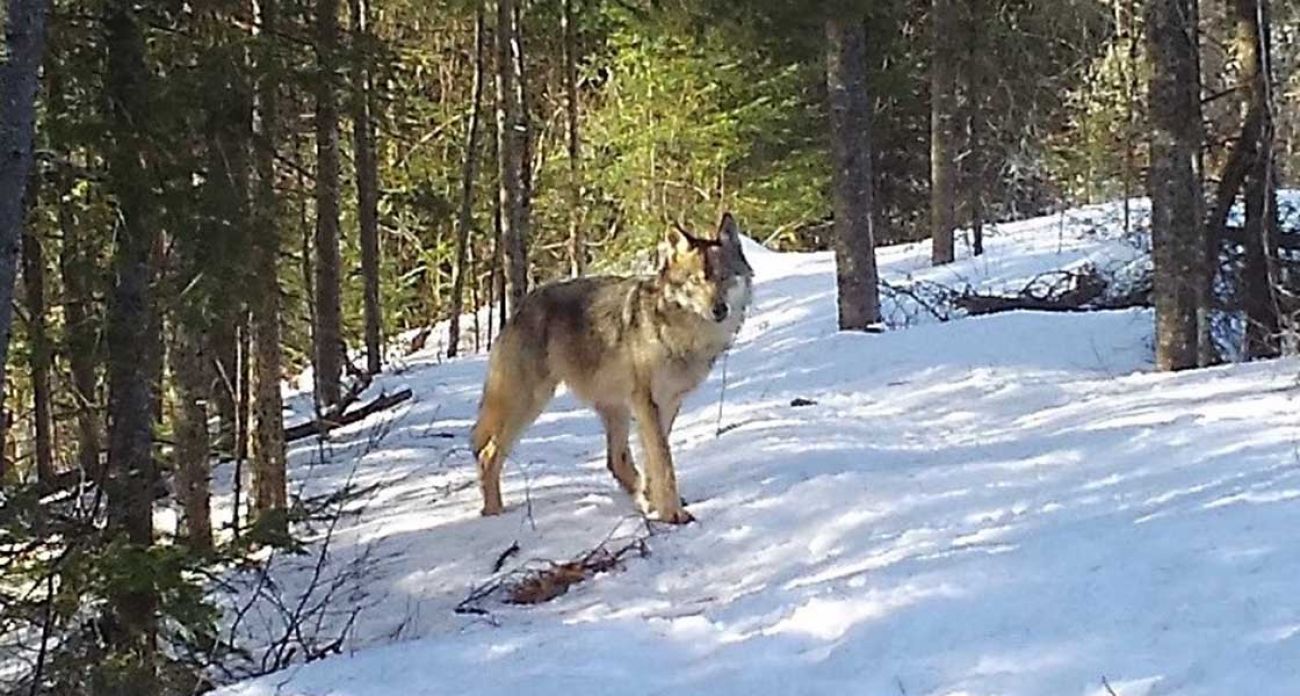
Researchers say the Upper Peninsula is near capacity, with indications some wolves crossed the Straits of Mackinac in the frozen winter months to northern lower Michigan. (Genetic testing verified one wolf near Cross Village in 2014, but no mating pairs have been identified.)
It’s an unlikely resurgence after wolves receded from the Great Lakes like the glaciers that carved their range. A wolf bounty was the ninth law passed after Michigan achieved statehood in 1837, a death sentence that was not repealed until 1960, when the state’s wolf population had nearly vanished.
The Endangered Species Act of 1973 is credited with the return of Canis lupus’ from Canada to levels not seen in generations in Michigan, Wisconsin and Minnesota.
This year marks the 30th anniversary since a single breeding pair was discovered in the mid-Upper Peninsula. Today, wolves can be found in heavily forested lands in every U.P. county.
“A wolf attack on a human has never been documented in Michigan,” according to the Michigan Wolf Management Plan. “However, wolves have attacked people in other areas of North America … and concerns for public safety are warranted in some situations.”
Aside from livestock, hunting dogs and occasionally pets are also killed, anywhere from a few per year to as many as 17 in 2014. Michigan taxpayers do not reimburse owners for those losses.
The state says 25 wolves have been killed since 2004 as a “non-immediate” threat to human safety. Those cases largely involved nuisance complaints of wolves wandering near residents ‒ not livestock farms. For example, eight wolves from two packs were taken in winter 2012 after following deer to residential bird feeders near Ironwood.
It’s not entirely clear how many wolves remain in the Ontonagon pack today.
The last of the three 2016 shootings, on June 11, involved a female wearing a radio-collar that had traveled 55 miles north from Golden Lake. That left three remaining wolves. But not for long.
A fourth wolf was killed by a vehicle shortly afterward, state records show, a fate experts said is not uncommon among packs that have been disrupted. That left two female survivors. No pups were seen, though a lactating female was spotted by a government sharpshooter around the time of the killings, a DNR spokesperson told Bridge.
That female’s partner was likely among the two males shot, as alphas generally mate for life.
A quieter farm
There have been few verified livestock attacks at the Dykstra ranch since 2016, state records show. In the last DNR survey of wolf populations, conducted last year, three adult wolves were seen in the Ontonagon Pack.
That number likely went back down again this year. DNR arrested a Greenland man in January for allegedly shooting a collared adult female.
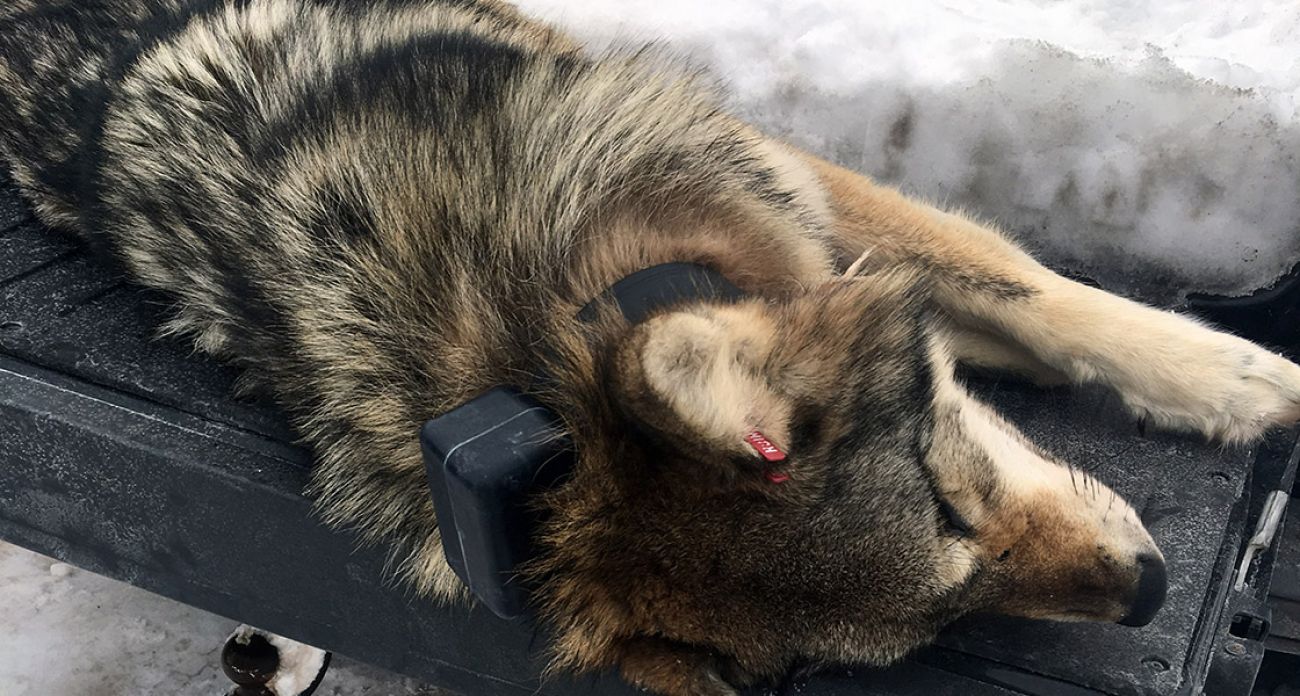
I sent the DNR an email asking if Roell, the depredation specialist -‒ a Great Lakes and national authority on wolves -‒ could tell me if the poached wolf in Greenland was from the Ontonagon Pack.
My email was forwarded by Golder to Roell, then to Mason, the wildlife chief, and Minzey, the author of the discredited 2016 report. The men engaged in an internal discussion about my inquiry, presumably unaware I had been left on the email string.
Golder: “Brian: Can you please help answer this factual question for this reporter ‒ whether or not the wolf taken near Greenland was part of the Ontonagon Pack?”
Roell: “Why are we helping John Barnes yet again?”
Golder: “Just answering a factual question in this instance. Thanks.”
Roell: “The answer is No! Really the answer to all of Barnes's questions is no.”
(Roell eventually confirmed in the email exchange that the poached wolf was not from the Ontonagon pack.)
Golder: “Thanks, Brian. No, this wolf was not from the Ontonagon pack ‒ that is a sufficient answer for Mr. Barnes' purposes.”
About the author
John Barnes worked at The Grand Rapids Press and Mlive.com for 33 years. He specialized in investigative journalism and most recently oversaw journalism projects for Mlive.com’s eight newspapers statewide. Barnes has reported extensively on gun rights, criminal justice, traffic safety, the outdoors and medical issues.
Michigan Environment Watch
Michigan Environment Watch examines how public policy, industry, and other factors interact with the state’s trove of natural resources.
- See full coverage
- Subscribe
- Share tips and questions with Bridge environment reporter Kelly House
Michigan Environment Watch is made possible by generous financial support from:
Our generous Environment Watch underwriters encourage Bridge Michigan readers to also support civic journalism by becoming Bridge members. Please consider joining today.
See what new members are saying about why they donated to Bridge Michigan:
- “In order for this information to be accurate and unbiased it must be underwritten by its readers, not by special interests.” - Larry S.
- “Not many other media sources report on the topics Bridge does.” - Susan B.
- “Your journalism is outstanding and rare these days.” - Mark S.
If you want to ensure the future of nonpartisan, nonprofit Michigan journalism, please become a member today. You, too, will be asked why you donated and maybe we'll feature your quote next time!






